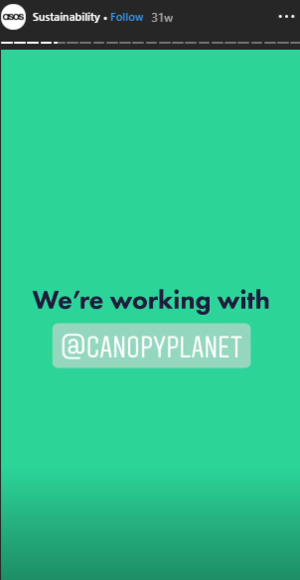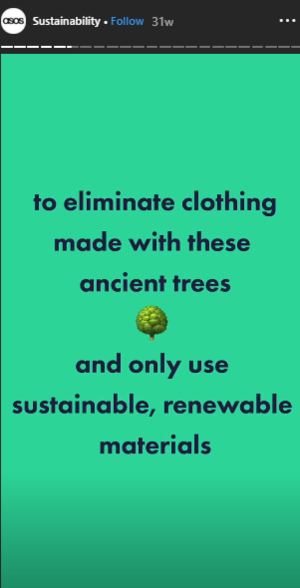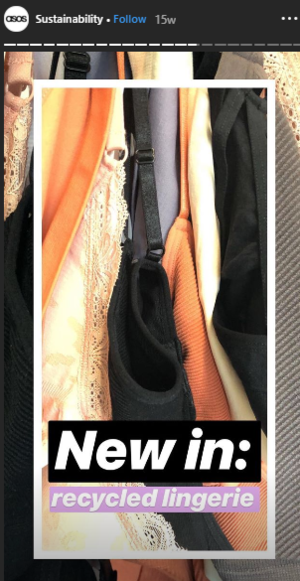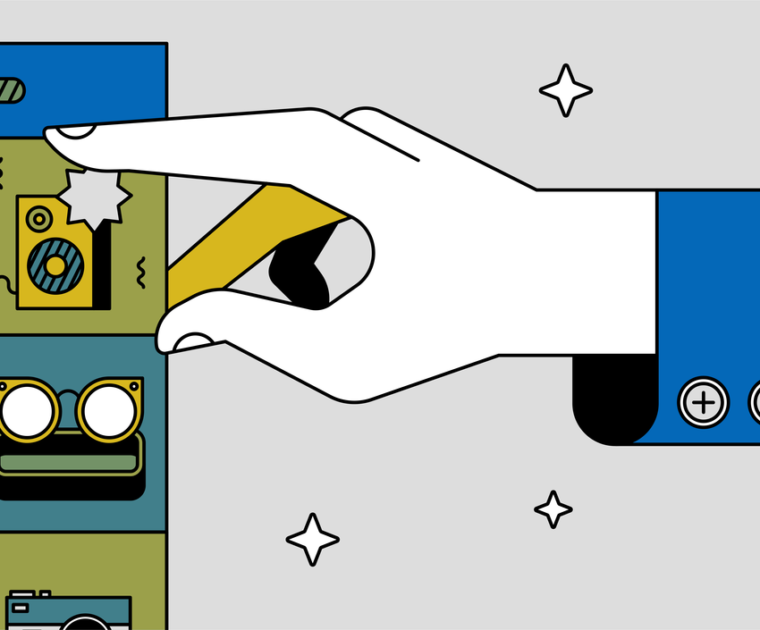The Rise of Recommerce and Online Resale Sites Part 2: How Retailers Like Depop, ASOS, and Stella McCartney Are Appealing to Thrifters
Despite FANTASTIC holiday sales the retail industry is still experiencing a seemingly unstoppable tumble in revenue. As companies like Macy’s and Sears scrambled to implement a legitimate plan B in response to the exponential growth of e-commerce, fewer in-store visits from customers often mean dwindling sales, smaller inventories, closing stores, and in some cases bankruptcy.
Last week, we analyzed the campaigns of three luxury brands… luxury goods represent one segment of the retail industry that is still experiencing growth. This week, we’re analyzing another profitable segment in the retail sector, also experiencing massive growth – resale.
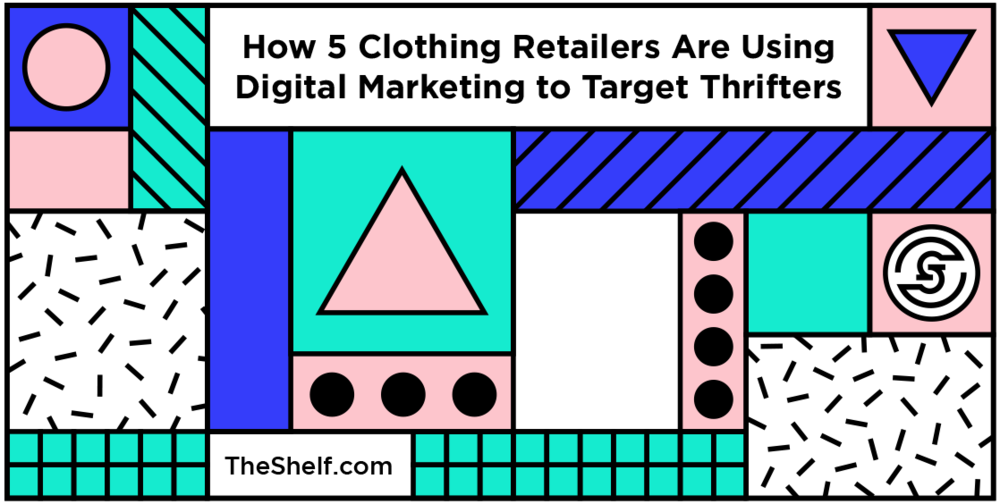
So… we published The Rise of Recommerce and Online Resale Sites a few weeks ago to give you an overview of the resale industry as a whole. You can read that post here. In this post, I want to take a look at the marketing strategies of clothing brands that are successfully targeting thrifters.
Resalers are Nudging Traditional Retailers Out of Closets
Uh… thrifters. Why thrifters? Aren’t they sort of like the anti-target? Yes, and no. By definition, thrifters do spend a portion of their hard-earned money on used stuff.
The thing is, thrifting isn’t going anywhere anytime soon. In fact, the resale market is expected to double in size, reaching $41 billion in annual sales by 2022, according to ThredUP’s 2018 Resale Report. Just a few years ago, thrifting was sort of an acquired taste. In 2012, only 11 percent of the items in the average thrifter’s closet were used. By the year 2022, 40 percent of the stuff in their closets will be used. That means the money shoppers are spending on vintage goods and previously-worn clothes are being moved out of the hands of traditional retailers and into the hands of resalers – that includes individuals resalers, apparel brands, and resale stores.
It is projected that the money shoppers spend at department stores like Bloomingdale’s and Macy’s and even mid-priced specialty stores like Banana Republic and Ann Taylor is going to shrink and that money will instead be spent with off-price stores like TJ Maxx, and you guessed it, resale stores like Poshmark and ThredUP.
For Millennials, Thrifting May Make the Most Financial Sense
That makes sense, right? We’re always harping on how Millennials have more debt than their Boomer parents, and are making different buying decisions than their parents would have made.
So, let’s look at the some numbers. Thrifters pay, on average 70 percent less shopping resale than they would buying the same items new. They pay 40 percent less shopping at off-price stores than they would shopping with traditional retailers.
That’s why resale sites like Depop, ThredUp, and The RealReal have all been experiencing year-on-year growth as consumers become more ethically conscious with every purchase.
The Resale Market Has Officially Become THE Thing
The resale market is rapidly growing. True. But how is an industry based around used clothing making such a high revenue?
Well, according to that report I mentioned earlier, one in three women shopped secondhand in 2017, and that was about 10 million more women than the year before.
Millennials play a big part in the success of the resale industry because they are weirdly both wasteful and waste-conscious. Here’s why: The average Millennial discards a clothing item after just one to five wears. The flip side is 77 percent of Millennials are more likely to buy from brands that are environmentally responsible. #kanyeshrug. In our deep dive into how to market to Millennial women, we discovered that 34 percent of Millennial women are more likely to spend their money on products that are environmentally friendly.
Consumers Are Moving Spending Dollars to Resale Stores
There are a couple of reasons buyers are shifting their spending from buying new at traditional retailers to buying used at online and offline resale shops.
People are spending more time shopping online and choosing to shop from their phones in lieu of venturing into stores… and getting those all-important impulse buys (socks, lip glosses, matching earrings, a bangle that would be cute with another thing in your closet) isn’t so easy online as it is in-store.
People are buying clothes direct from China. From baby clothes to prom accessories, it’s now simple and inexpensive to buy high-quality goods directly from China and skip paying the premium franchises, big box retailers, and physical store locations charge consumers to get access to the same (or close to the same) goods and services.
Casual Friday starts on Monday. Who needs a work wardrobe when more and more employers are allowing employees to dress down for work? Street clothes and work clothes are often the same.
Signature outfits. Buying 5 black turtlenecks and 5 pairs of acid washed mom jeans to wear Monday through Friday is a REAL THING. Popularized by Steve Jobs and Mark Zuckerberg (and driven by the minimalist movement), more people are relying on signature outfits – self-appointed uniforms that reduce the amount of time spent deciding what to wear to work every morning.
Remote teams. Four in ten American employees now work remotely at least part of the time. At The Shelf, those of us who work at the Brooklyn headquarters work remotely two to three times a week. The rest of the team is spread out all over the globe – British Columbia, the UK, Russia, California, Atlanta… this is fast becoming the new norm.
Social media. Social has changed the way we live in multiple ways. One key way is that people no longer have to rely on apparel as their primary form of self-expression. Many of us now prioritize experiences over things. We’re seeing people care more about having an Insta-worthy life that they can show off on social (and create a business from) than spending their money on branded items.
Athleisure. Athletic wear is getting smarter. With retailers like Outdoor Voices (which we profiled in this post) selling athletic wear with no-sweat technology, people with active lifestyles can move seamlessly from gym life to life-life without having to stop and change clothes.
Is it any wonder spending on apparel has plummeted?
Consumers are planning to reduce their spending in traditional clothing avenues such as department stores by as much as 71 percent over the next five years, and at the same time, increase their spending on thrift products by the same percentage. Thanks to this shift, we’ve seen a number of resale brands experience phenomenal growth recently… which brings me to the next part of this article – how clothing brands – even traditional brands – are targeting the thrift market.
These are some of our favorite brands and the marketing strategies they’ve employed to take advantage of this growing retail trend.
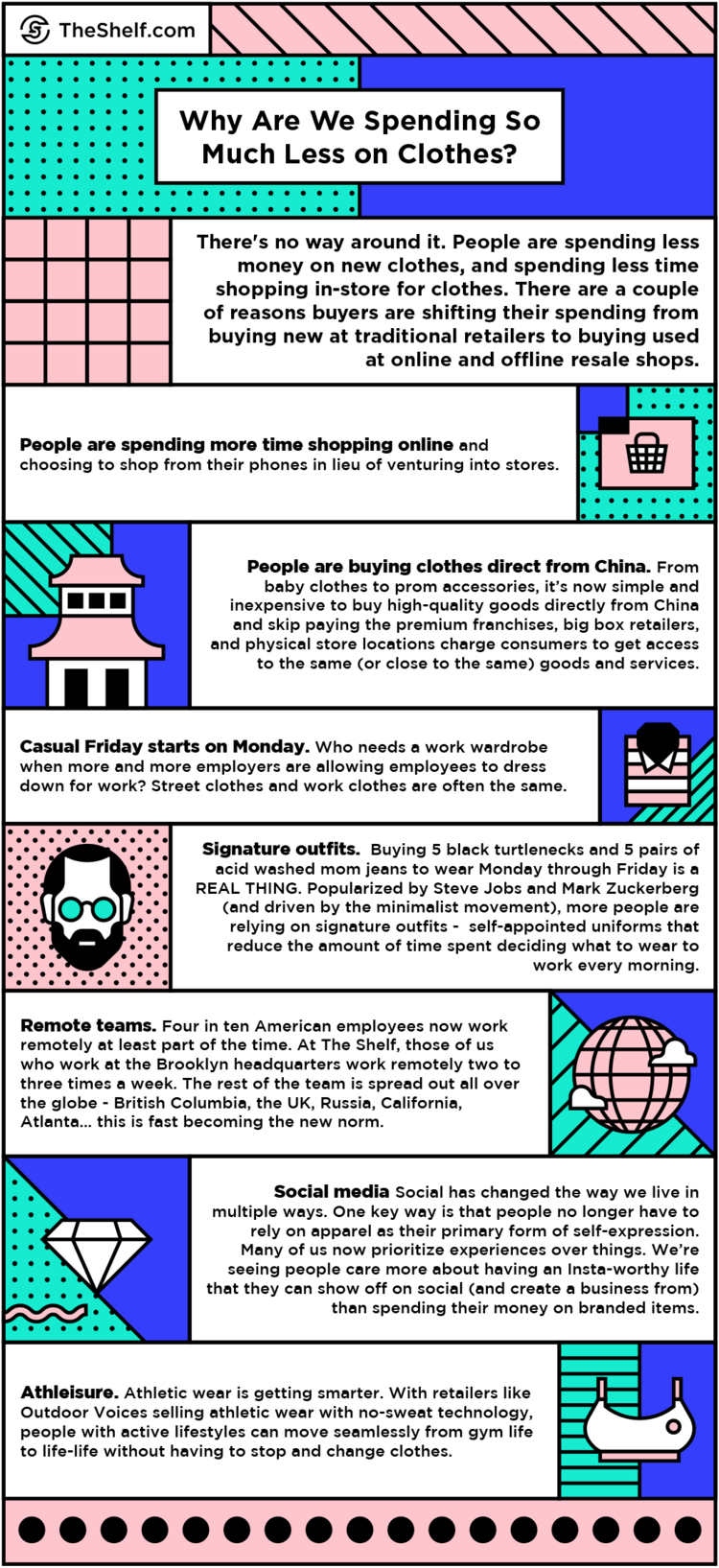
Luxury Resaler The Real Real
The Real Real is probably the most popular luxury resale platform in the space, though platforms like Vestiare Collective are also making noise in the luxury resale space. The Real Real only works with luxury brands and offers customers a slick experience when shopping with them online. The Real Real has the authentication process locked down so buyers don’t have to worry about being sold knock-offs.
Luxury goods are ideal for resale sites. Sixty-six percent of resale customers buy luxury goods second hand. This enables them to own brands they otherwise wouldn’t (or couldn’t) pay full price to own. Thanks to the growth and rebranding of the some of the biggest names in the luxury retail industry in recent years, luxury goods are more accessible now than ever before.

THE REAL REAL – STELLA MCCARTNEY PARTNERSHIP
The Real Real pushes the overarching brand message of eco-consciousness, and the brand has partnered with fashion icon Stella McCartney to launch a circular fashion promoting the message of “make well, buy well, resell”. Resalers get a $100 voucher for selling a Stella McCartney item on The Real Real.
The campaign included social media posts, TV spots, and print ads encouraging people to resell their unused items. You may know Stella McCartney has a reputation for creating ethical fashion, making vegan sneakers, trying to push fur bans, and using recycled materials as often as possible.
By teaming up, the two brands were able to tap into to each other’s followings and add to their own. The campaign gained some serious traction online, thanks in part to the growing trend of sustainability both in and out of the fashion world.

WHY IT WAS SORT OF MAGICAL
Finding another brand that perfectly lines up with your own core values to form a partnership is always a win.
Shared values. Partnerships inherently lend each partner the other’s values. allows you to tap into their following while staying true to your brand. The Real Real’s partnership with Stella McCartney was 100% on-brand for both companies.
Wider reach. Whenever brands with different core audienes join forces, the result is greater exposure. The key is to choose partners carefully so you can leverage the exposure for the mutual benefit of both partners. Double the impact without double the work.
Customer Rewards. This partnership provided The Real Real with a new and exciting way to reward their loyal customers, something that probably wouldn’t have happened outside the partnership with Stella McCartney. Customers like to feel valued, and rewards like gift vouchers, discount codes, and free items with purchase are a great way to do this. By teaming up this reward system with another, related brand, they made it feel even more special.
The Hip Resale Community Depop
Depop is a social marketplace used by over 10 million people worldwide. Unlike The Real Real, Depop is more peer-to-peer selling, whereas The Real Real serves as an intermediary to authenticate products being sold on its platform. Depop is a much more accessible platform, especially for Millennials because it gives the whole shopping experience a personal feel, as people are buying directly from individual sellers.
The platform features a mixture of people selling items straight from their wardrobes… plus, small business owners and designers use the platform to sell their own products. We’ve talked before about how a third of women only wear an item five times before getting rid of it. That’s just one workweek of wear time. And, with many of us more focused than ever on our environmental impact, simply throwing our garments away is… well, it’s frowned upon. This is where social selling networks like Depop become super useful.
Often lorded as being a mash-up of online bidding store eBay and Millennial favorite Instagram, Depop engages in some rather unorthodox marketing to reach its ideal demographic.
DEPOP ROLLED OUT A KILLER MARKETING CAMPAIGN…
The majority of Depop’s early growth came from user word-of-mouth, but the brand built on the momentum with a campaign that partnered digital and print together and focused on the users themselves. Depop created a collection that highlighted its users, including a few well-known faces like model Jazzelle Zanoughtti of @uglyworldwide.
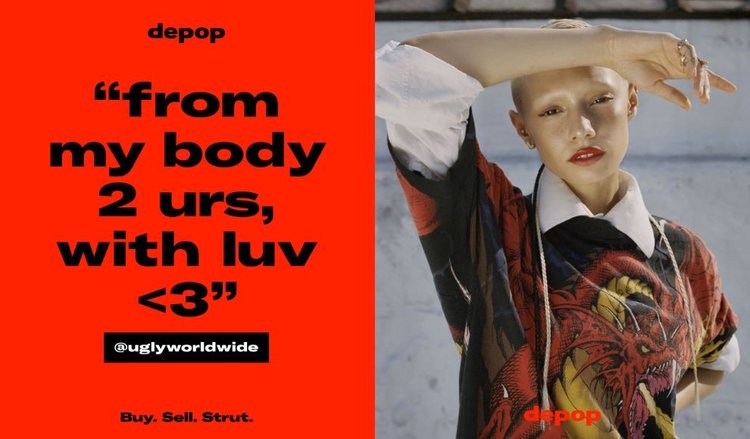
(Image: The Drum)
Depop highlighted what customers already loved about using the platform – the feeling of community. And, thanks to the diversity of people featured in the ads, Depop was able to celebrate the diversity of its user base – another important factor for Millennials and Gen Z.
…. THEN OPENED A FRIGGIN’ DEPOP COWORKING SPOT
But, the fun didn’t stop there. Depop also opened a brick-and-mortar location in L.A.their own. The store was not filled with stock, and it wasn’t marketed as an IRL place to buy the items you might see on the site.

Instead, Depop designated it a hub where sellers could attend workshops to improve their sales, photograph products with the right lighting, and even book a session with the staff photographers to do it for you. It is a place for users to meet, discuss, and build their own businesses through Depop’s framework.
Depop’s marketing strategy of print ads and brick-and-mortar stores may seem odd, especially since 75 percent of the platform’s users are under the age of 24, but it definitely worked. The company successfully tapped into the minds and desires of the #hustle generation and its disenfranchisement with traditional retail. Depop has become a community.
Traditional Brands Are Targeting Thrifters, Too
URBAN OUTFITTERS
Wait. What? Urban Outfitter’s Urban Renewal line is a good example of a traditional apparel brand targeting thrifters and proponents of circular fashion by including a section on its site for shoppers to buy Urban Renewal, Urban Outfitters’ curated selection of previously-worn apparel.
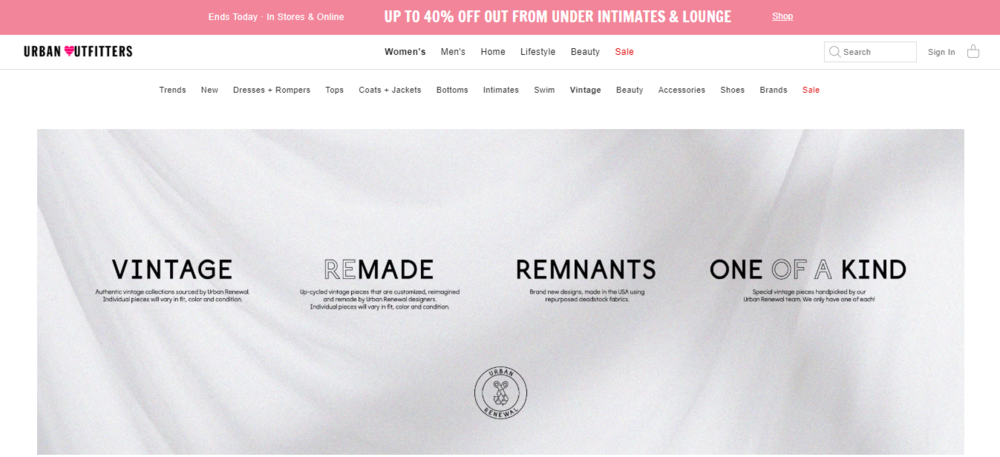
So, trust that dedicated marketplaces aren’t the only brands cashing in on this resale revival. Urban Outfitters is one of a growing number of high-street brands that are working hard to claim their own piece of the resale market.
Urban Renewal is classified as a brand under the Urban Outfitter umbrella, so it’s not a marketplace since users aren’t the ones selling apparel. Instead, items in the Urban Renewal line are carefully selected by UO’s own buyers then resold to the public both online and in-store.

This Urban Renewal line comes in four flavors; Vintage Originals, Remade, Remnants, and One of a Kind. With products that range from unique high-end luxury pieces to new items made entirely from discontinued fabrics. A brand that has always catered to the Millennial crowd with their stylish and vintage-inspired designs this supplemental line suits them perfectly.
ASOS
Online retail giant ASOS has had a resale marketplace as part of its online store for years. The ASOS Marketplace. independent brands and vintage stores from around the world into one easy-to-shop online marketplace. The company represents over 800 different brands with products varying from vintage designer sportswear to one-of-a-kind handmade items.
ASOS talks openly about its commitment to a more sustainable fashion industry and has a collection of Instagram Stories under Sustainability that double as a fast fact resource and a way to promote recycled items posted to the ASOS Marketplace.

Let’s Wrap it Up
The phenomenal growth of the resale market teaches us that the influence of the millennial generation is not to be underestimated. Eco-conciousness is fueling spending habits, and feeling good about your purchases seem to be the driving factors between a lot of retail spending.
Even if you’re not participating in the resale industry, there are still some pretty good lessons to be learned in this post… like understanding who your target market is, what they’re about, and what would resonate specifically with them can bring back good, old-fashioned work-of-mouth advertising. These are the types of strategies that work all the time, every time, across every vertical… if you execute them well.



